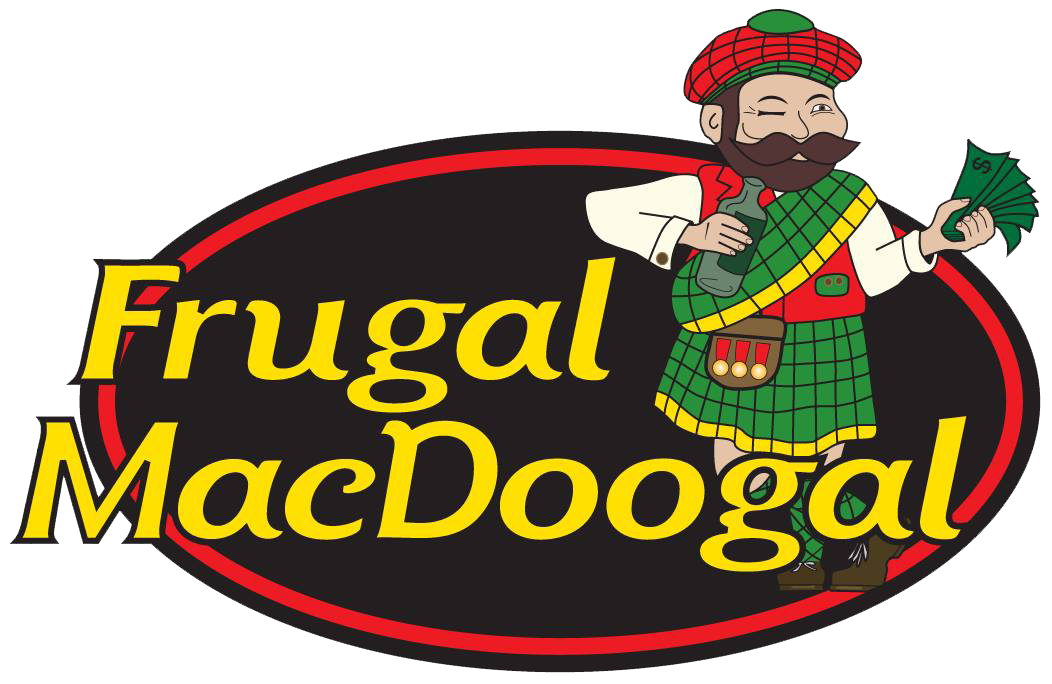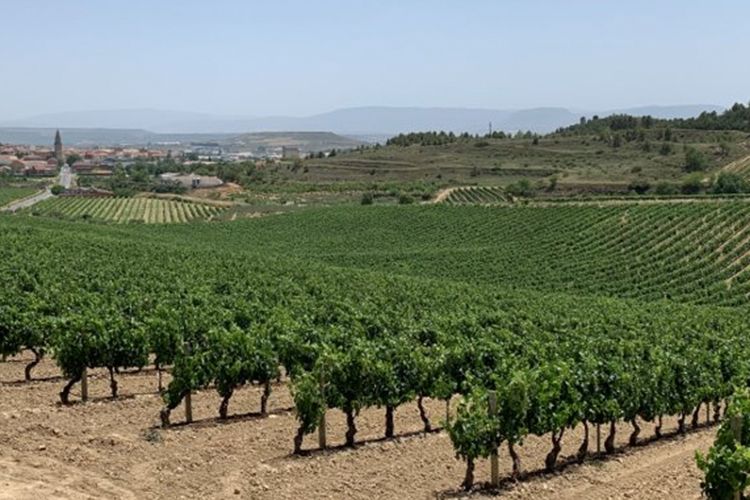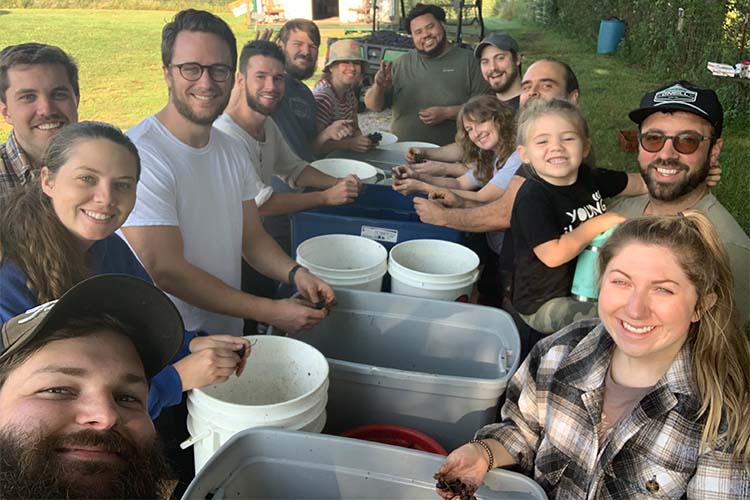A pilgrimage to the heart of Champagne!
An homage to craftsmanship and a celebration of the exquisite art of winemaking
I'm glad to see these temps drop, and your wine this month should also help you cool down!
(Sidenote: If you’re not a member of my delivery wine club Preston’s Picks, you should be. Try it out for a month here. This blog is just a taste of what members receive each month, with bottles to pair).
I’ve been teasing another trip to my wine club members for a while, keeping the location to myself, but now that we’re back I’m going to fill you in on our journey.
Some of you guessed it! I finally made my way to where my favorite wines in the world are made, Champagne- a region synonymous with luxury, celebration, and of course, exquisite bubbly.
First, some context: My sis is a huge Formula 1 fan. During our Thanksgiving dinner her and my dad were casually discussing which race they’d like to go to. It didn’t take much for the rest of the fam to jump on board. I have, unavoidably, gotten into it with them this last season and man is it fun. It didn’t take much effort to decide where we wanted to go this year. After a little discussion we landed on The British Grand Prix in Silverstone (right outside of London). I didn't think it would happen at first, but we got the pieces together and made it work! We decided to make a decent trip out of it and stay in London a few days after the race and then make our way down to Paris for the better part of a week. And well, me being me, couldn’t have us that close to Champagne without popping over. So I planned a little 2 day trip to bubbles land. The entire trip was incredible! A great 10 days with my favorite people.
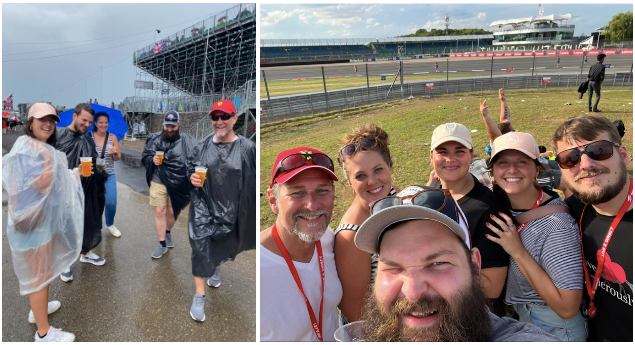
Here we are at Silverstone. The first pic is us as the silly Americans who didn’t bring rain gear to England lol. Luckily it didn’t rain long. An incredible experience. I’m already looking forward to the next.
After race weekend, we jumped on a train, hit the Chunnel, and headed south to Paris.
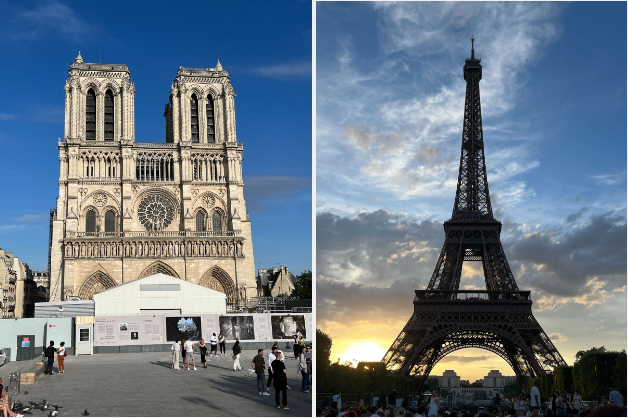
After a few days in Paris, we jumped in the rental car and hit the road east to Champagne.
If you have come into the store for a bottle of Champagne and talked to me or anyone on my team then you’ve probably heard of one, if not all three, of the places we visited on our short trip: Taittinger, Henri Giraud, and most likely Charles Mignon, which is usually our first suggestion to anyone looking for true Champagne.
Our visits were strategic. I’m a wine lover and a wine expert, but I’m also a retailer, and therefore try to not only suggest expensive bottles when customers ask me for a suggestion. I wanted to see a variety of producers that are priced well, making them brands I love to sell.
I’m not here to show you only the best Champagne in the world (that, of course, is Krug) or rattle off details about some esoteric variety. We do a little bit of that in the wine club, but to the general customer I am here to show you well rounded wines that check off as many boxes as possible. Boxes like this, maybe even in this order -
1. Taste 2. Affordability 3. Great package 4. Great story 5. Shareability 6. Flexibility and purpose (i.e. gift, dinner, pool party, all of the above, etc.)
Let me know what I’m missing here or if this isn’t the order in which you contemplate buying options.
These wines, especially Charles Mignon, score high in so many of these categories.
I love Champagne so much, which is somewhat of a problem for me because Champagne is expensive. The Charles Mignon Brut Reserve sits on the shelf at $39.99, and while that seems a bit more than the normal person spends on a bottle, if it’s not a special occasion, that is about the intro price for any true Champagne. It is nearly impossible to find a bottle for less than that.
One thing to point out here is the use of “true” before Champagne, because I’ll use it a lot going forward. When I say Champagne I’m not referring to all sparkling wine, as the term has come to be used. I am only talking about sparkling wine from the Champagne region of France. While the term champagne has become synonymous with any bottle of bubbles it is actually not allowed to be used on the label to describe wine unless it comes from Champagne. If Champagne is capitalized then it is referring to bubbles from Champagne. If someone says “true champagne” when speaking they are being sure to make the distinction that the wine, in fact, is real Champagne, not a sparkling wine made elsewhere, like Spain, Italy, or the U.S.
There’s a simple reason people have taken the name of Champagne and used it to market their own sparkling wines - Champagne is the best!
(Producers taking the term “Champagne” to describe their sparkling wines eventually led to most nations protecting the term, making it illegal to label sparkling wine that isn’t from Champagne as Champagne.)(Except in Russia where Putin passed a law in 2021 decreeing that only sparkling wine made in Russia can be labeled as champagne and all imported bubbles have to be labeled sparkling wine lol. People immediately panicked with many houses threatening to stop sending bubbles to the country, until the biggest house of them all, Moët knelt down and right away started sending their bottles into the country labeled with the mandatory “sparkling wine” designation instead of the bottles’ true origin “Champagne”.)
Wine from this region has the strictest standards for production of any sparkling wine in the world. This region has been making sparkling wine consistently longer than any other region. This region has the best terroir for growing high quality varieties that make the best sparkling wine. The infrastructure is the best, the tools are the best, culture has been built around it. Sparkling wine is in the blood of these people. They, simply, do it the best. And that must be protected.
Scroll down a bit if you rather hear about my trip than how Champagne is made
There are many methods winemakers can use to get bubbles inside a bottle, but the Champagne method is the best. The method is known as Traditional Method, but you may also see it written as méthode traditionnelle, Méthod Champenoise, or a few other things depending on the native language of its place of production. This is the most important method to know as it takes the longest, produces the highest quality wines, and generally costs much more than bubbles created using other methods. Traditional method is used to create Champagne, but also Cremant, Cava, and many fine American sparkling wines.
Step1 - Make the still wine. Producers will harvest grapes, smash them, and ferment a wine like any other winery would do.
Step 2 - Tirage. After the blend is created and bottled a small amount of yeast and sugar will be added back to the still wine before the cap is placed on the bottle. This yeast and sugar will react with one another to start a 2nd fermentation inside of the bottle.
Step 2 - Aging. The wine is now placed down to age. Most Non-Vintage Champagne, like this, will age for 2-3 years before disgorgement. Vintage Champagne must age for a minimum of 3 years before disgorgement but most age much longer.
Step 3 - Riddling. This is the process in which the bottles, facing at a down angle in a riddling rack, are rotated over and over again so that the yeast left in the bottle from that 2nd fermentation falls slowly down to the neck of the bottle and rests on the cap.
Step 4 - Disgorgement. When the lees (dead yeast cells) have fallen to the neck of the bottle, the neck is submerged into a frozen bath which causes the lees inside the neck to freeze into a little block. The cap is then removed and the frozen lees shoots out! How crazy and ingenious.
Step 5 - Dosage. This is when the producer adjusts the sweetness levels of the bubbly. Right after the frozen lees pops out of the bottle, a small amount of sugar and still wine is pumped into the bottle before the wine is quickly corked to trap in those bubbles. The amount of residual sugar in the bubbly varies, depending on style. (Brut, Extra Dry, Brut Nature, etc.)
Champagne is probably my favorite style of wine because it can offer such rich and complex flavors that come not only from terroir and grape variety, but from that secondary fermentation and aging on the lees. It's this extra step that adds another layer of complexity and deliciousness. And it’s that extra step that gives Champagne its famous toasty flavors of brioche and nuts.
Now on to Champagne, the spiritual home of sparkling wine.
Lush vineyards sprawled across the landscape, their orderly rows showcasing the meticulous artistry behind each bottle of Champagne. The region's charming towns, with their half-timbered houses and cobbled streets, harken back to a bygone era. From the moment I arrived, I felt a palpable sense of history and tradition that would shape our entire experience.
We crested hill after hill, a green rollercoaster, small quaint towns coming in and out of view in the distance. The beauty was stark. Once within the technical region, we drove for long while, but I could have driven on these back roads for days. It really did feel like going back in time, only with modern cars lining the streets. Champagne isn’t small. In fact, it is twice the size of Napa Valley in terms of acres planted and far larger in its actual size- something I quickly noticed. The vineyards of Champagne are spread out, fruit only planted on the most ideal pieces of land. That’s not the case in Napa where a vine is planted on every square inch of the valley. We drove through a handful of these villages until we reached Charles Mignon, located in one of the most important two towns in Champagne, Épernay.
The Charles Mignon House is a family of growers native to Champagne. They have a long history in growing and producing high quality Champagne using all three major Champagne grapes: Chardonnay, Pinot Noir, and Pinot Meunier. All grapes Mignon uses are hand harvested and vinified in stainless steel. They, only recently, forwent their RM (Récoltant-Manipulant) status so that they can produce a million bottles annually. And while that sounds like a lot, it isn’t really. Moët & Chandon, for instance, produces over 30 million bottles. RM producers or “Grower champagnes” are houses that use only the grapes that they grow on their estate to make their wines. These houses are tiny, and have recently been sought after and praised by somms and wine experts as the best of the best. And while, grower Champagne is amazing, often better quality at a better price, it isn’t always the case. All I’m saying is, don’t buy a bottle of Champagne just because it has the little “RM” on the back and don’t put a bottle back just because it doesn’t. This is a great example of that. About 80% of the fruit Charles Mignon uses in their bottles is still their own fruit, and the other 20% is from small growers they have a great relationship with, from sites that are the best of the best, farmed with practices Charles Mignon sets. I still call it “grower” even though it technically is no longer one. They had to reach outside of their vineyards because they just couldn’t grow enough fruit to make the quantities they wanted. It only means a bit more access and better prices for us.
We have had a long standing relationship with Charles Mignon so it was great to finally get out to see the winery. We spent our time there with Jeremy, the Sales Director, who I work with to organize buying, shipping, and support and Guillaume Mignon, 6th generation, who works closely with his father, Bruno, to create the incredible Champagnes of their House. You can see the three of us in the pic below. We are in the library that holds wines going as far back as 1850. Guillaume is holding a large format of an old wine. He said, in his deep French accent “Send Charles this picture and tell him we opened this wine to make him Jealous” ha. Charles is our owner and Guillame’s trick worked.
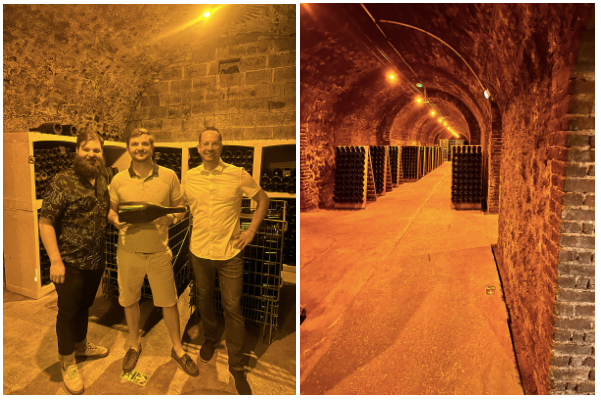
They were incredible hosts. While there, we toured the cellars and had an incredible tasting with Guillaume. These wines!!! The Grand Cru especially is incredible. (Their vintage Grand Cru bottle is $99. Compare this to other more famous vintage bottles like Veuve La Grande Dame, Taittinger Comtes, Dom Perignon, Cristal, and Krug that range from $250-$500).
The vintage is awesome, but remember I am not here to suggest only pricey items. My pick for you is The Charles Mignon Brut Premium Reserve which includes all three Champagne grapes and is made up of 20% Pinot Noir, 25% Chardonnay, 55% Meunier. It ages for 24 months on the lees and is their intro wine. This wine receives a moderate dosage of 9g/l (the max for Brut is 12g/l) with their vintage Grand Cru bottled closer to 5 g/L. I really enjoy the moderate sweetness of Champagne. It balances out the high acidity, makes it welcoming and homey and, most importantly, gives it even more ability to pair well with food, especially spicy, salty, and fried foods!
This wine is $39.99 and is a great expression of the Charles Mignon style, fresh and clean. It tastes of ripe apples, pears, lemon and grapefruit, a minerality shines through and then some nice brioche notes. Again, there are better Champagnes, but when taking price into account, this is hard to beat. So tasty!
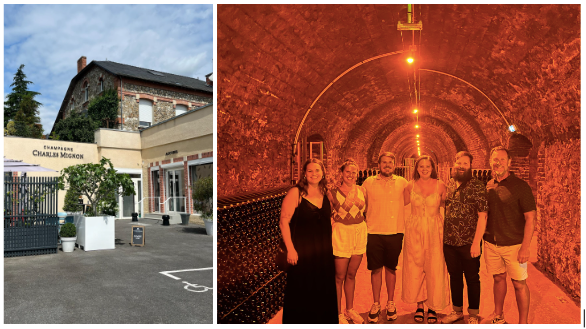
I could ramble on for pages about Champagne: the differences between Maisons, co-ops, and growers, each major region of Champagne, the differences in terroir and what grapes thrive in what places, the soil, the moist caves carved into the hillsides dripping wet with moisture, perfect for bottle aging, etc. But I will spare you.
This bottle is great for a nice dinner at home, a vacation day by the pool, a celebration with family, a gift for a colleague, or just a Tuesday fried chicken night. It is tasty and affordable, has a great story, is responsibly made, looks great, and you can get up to 8 toasts out of it, although you’re not going to want to share it with that many people. All of these things make Charles Mignon a huge win.
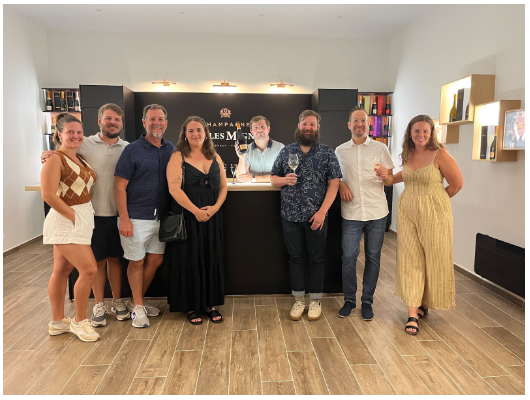
Every Champagne house has its distinct style, mostly shaped by the terroir from which the grapes are sourced. From the crisp and vibrant Blanc de Blancs, made solely from Chardonnay grapes, to the rich and luscious rosés that embody the essence of Pinot Noir, every bottle tells a story of the land it hailed from- well almost every bottle. Henri Giraud, the second stop on our trip, thinks differently than most Champagne houses.
They are one of the rare Champagne houses that used French oak heavily in the process. Most Champagne houses now use stainless steel, from start to finish. Stainless steel does not impart any flavor into the wine. It does not allow oxygen in and thus keeps the flavor of oxidation out. It keeps things clean, dark, and cold, allowing the wine to only express the place from which it came (and the yeast used), but really nothing more. Henri Giraud, on the other hand, does the opposite. Not that they don’t have a goal of expressing terroir, they just use different means to show off the terroir of their fruit.
When you drink a bottle of Henri Giraud you drink wine that is decades old, a small portion being added to the wine to deepen complexity and guarantee consistency.
(This is where things get fun, tricky, political, or whatever you wanna call it. Some would say the use of oak is just covering up terroir and bad wine while some would say the use of oak only enhances it. At the end of the day it all comes down to the individual winery. Henri Giraud is proof these additions can be done well. Charles Mignon is proof that you don’t have to use these things to make great Champagne).
The winery at Henri Giraud was beautifully quirky, modern art sculptures spread out across the lawn and courtyard, and odd decor inside the tasting room, their unique style showing through in more than just the wines. Our host was Stéphane, who walked us around and tasted us on their entire lineup plus some extra goodies, including their still Chardonnay and Pinot Noir bottlings they produce on the best years. These wines were amazing, something that is so unique to a sparkling producer but speaks to their philosophy. They seek to make great wine first, then to make it sparkling. It is why they use oak and why they age their wines the way they do. And let me tell you, they can make great wine.
Charles Mignon may have been my favorite overall visit, but my favorite wine of the trip was the Henri Giraud Ay Grand Cru Brut MV18. This wine was mind blowing. It is 80% pinot noir and 20% chardonnay, which is pretty typical of the house. Their focus is on pinot. The complexity is beyond me - jam, honey, hazelnuts, spices, vanilla, apple butter, tangerine. The quality is through the roof! And so is the price.
Most Champagne producers use NV for non vintage when the wine is a blend of previous vintages. Giraud uses MV for multi-vintage referring to that giant tank I talked about with the blend of every modern Giraud vintage.
They think they are about to get their first 100 point wine. It just hasn’t hit the press yet. A handful of the most important wine writers were there the month of July and a couple of the publications have announced all Champagne scores for the year except for two - Henri Giraud and Krug (remember what I said early?)
Our final visit was one of the big houses, Taittinger. It is enormous, but is also the only enormous house still owned by the family. The tasting room was gorgeous. It felt like a Bond villain’s dining room, modern art decor inside of a medieval castle. I love the wines from Taitti Tait! It was great to pop over for a quick tasting. They treated us to some great wines and a few incredible gifts. Each host rolled out the red carpet and I am truly thankful. It was a short trip, but a great first trip to the spiritual home of sparkling wine. Shoutout to all the reps, winemakers, owners, and suppliers who put in calls and set things up for us last minute. I can’t wait to get back and give the region the time it deserves.
Our trip to Champagne was an absolute game changer. Visiting the region added so much depth to my understanding of sparkling wine. I hope this letter did that for you, making it easier to envision, even here in Tennessee. We do have those rolling hills in common after all.
So, here's to our shared love of Champagne and rolling hills.
Cheers!
Preston
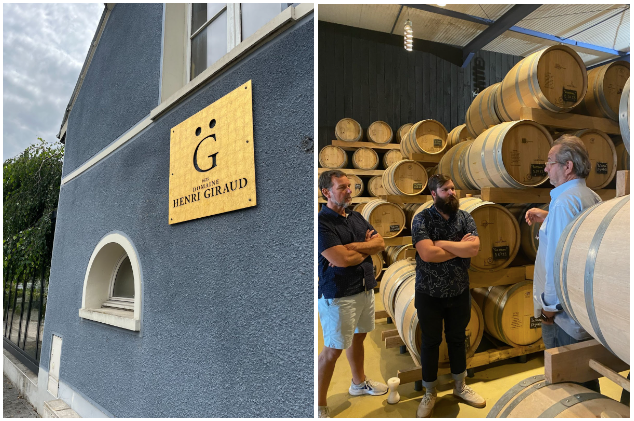
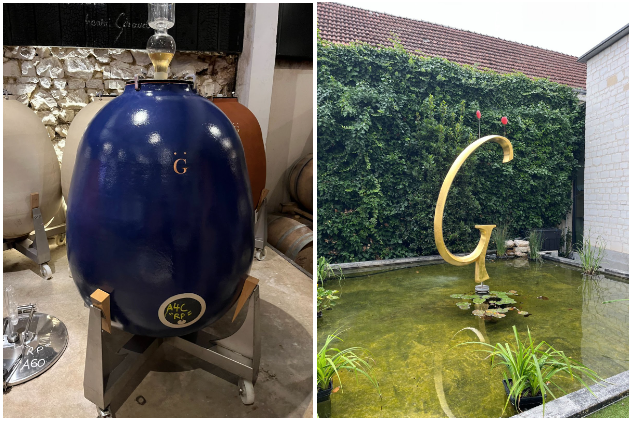
Henri Giraud was beautiful, inside and out.
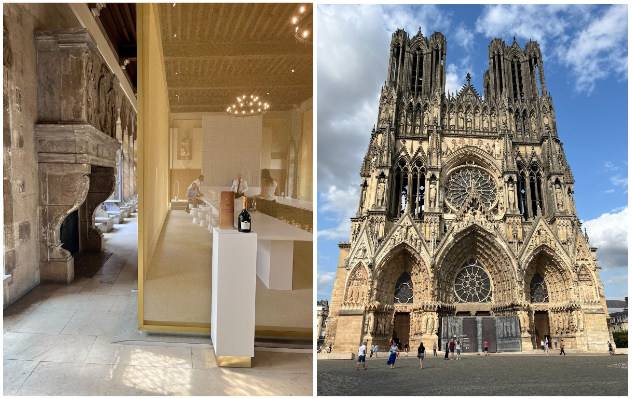
Taittinger tasting room on the left and The Reims Cathedral on the right. The cathedral was insane!!! It is the sister cathedral to Notre Dame in Paris and is where French monarchs have been crowned for nearly 1,000 years. Reims is one of the two main towns of Champagne, Épernay being the other.
The Wine Press
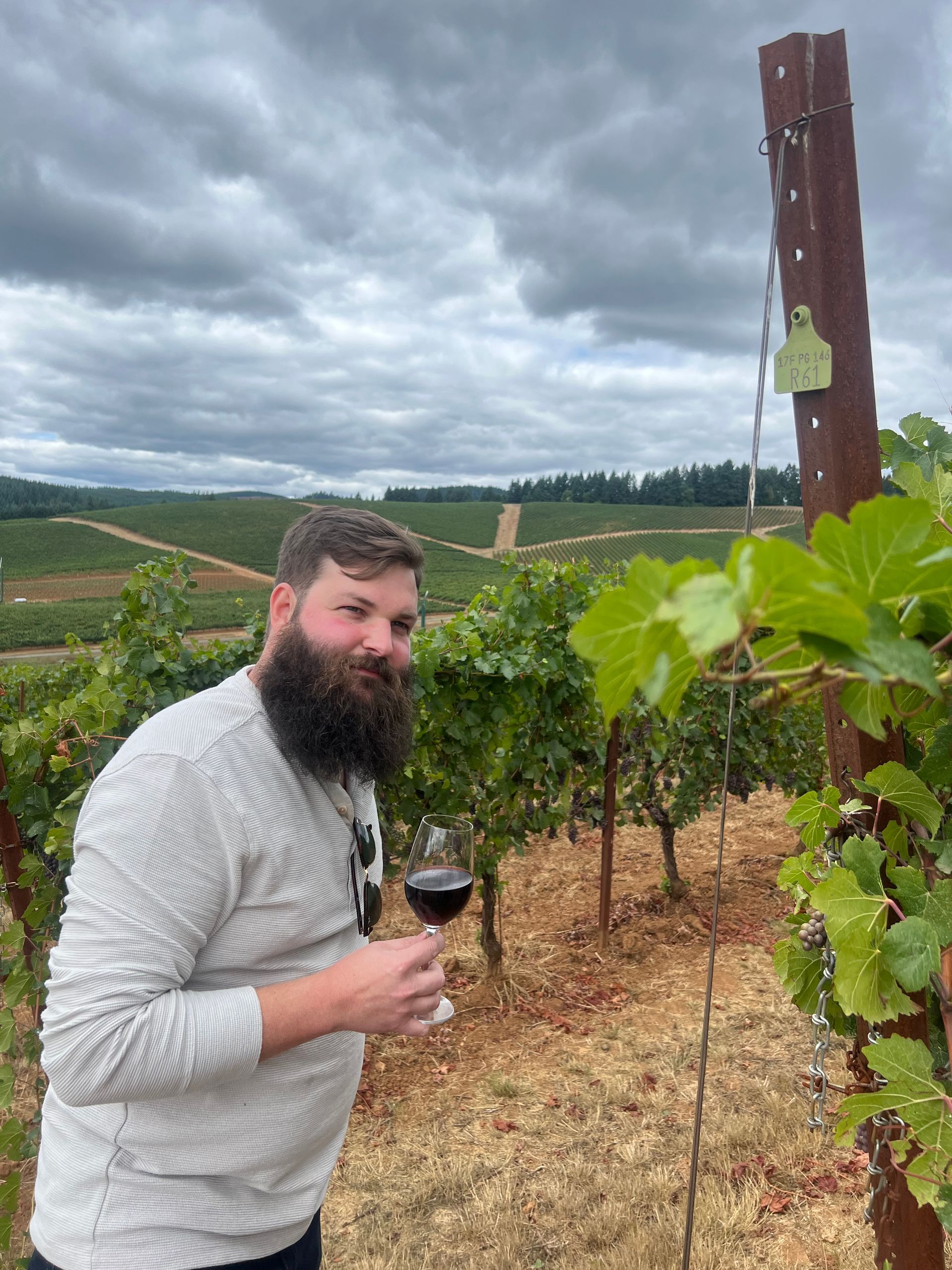

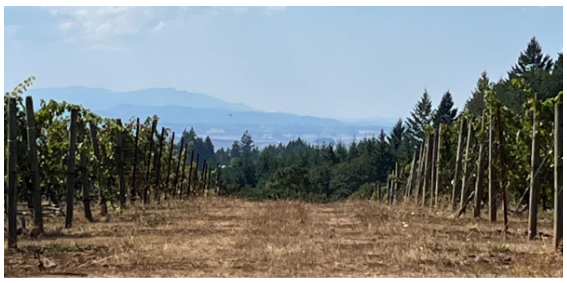
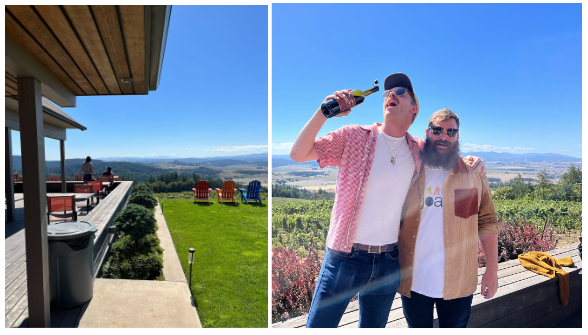

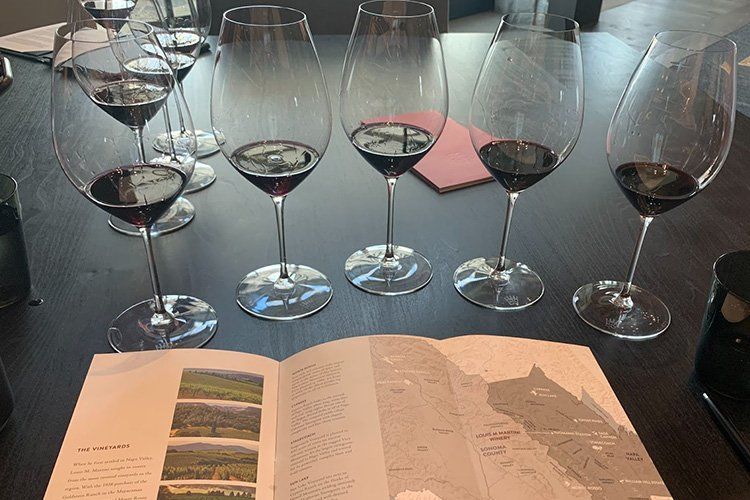
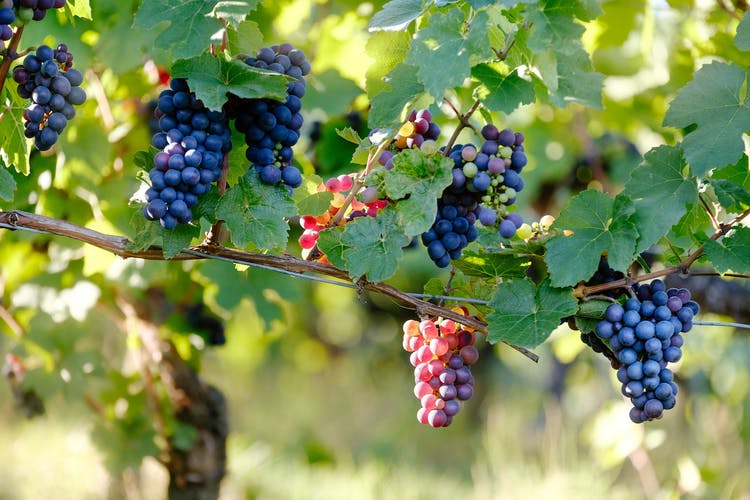
Store Hours
Mon - Thu: 9am - 9pm
Fri - Sat: 9am - 10pm
Sun: 10am - 6pm
All Rights Reserved | Frugal MacDoogal | Privacy Policy
